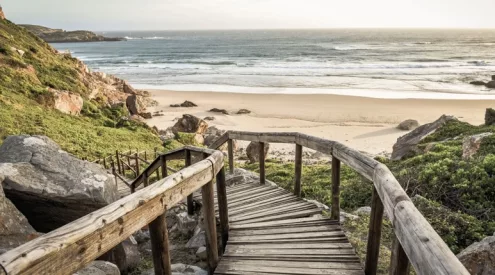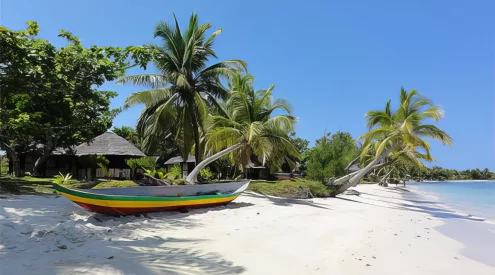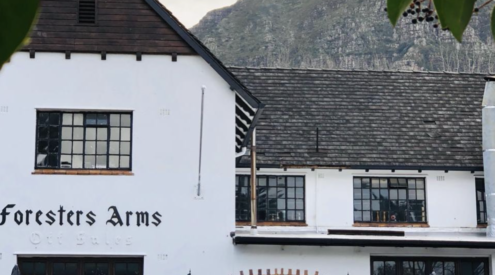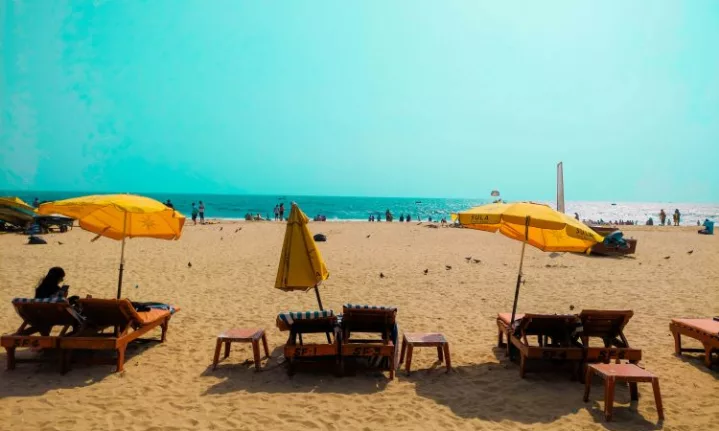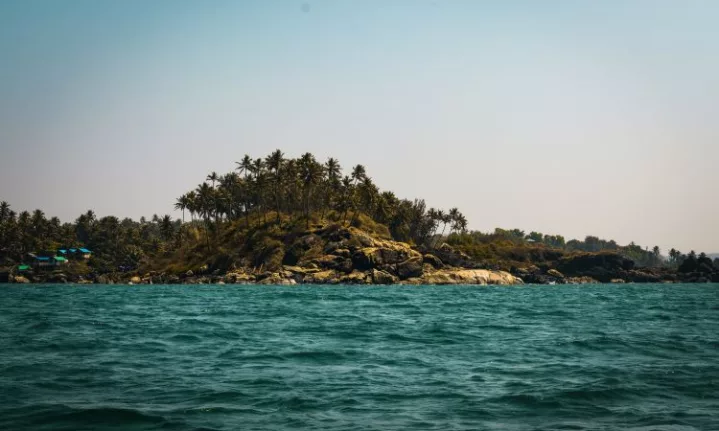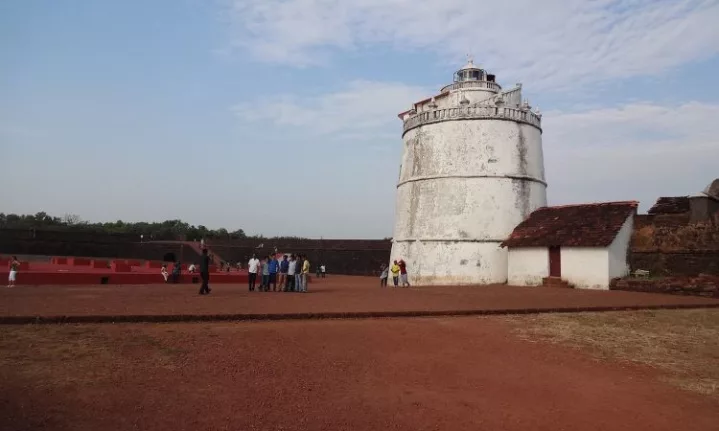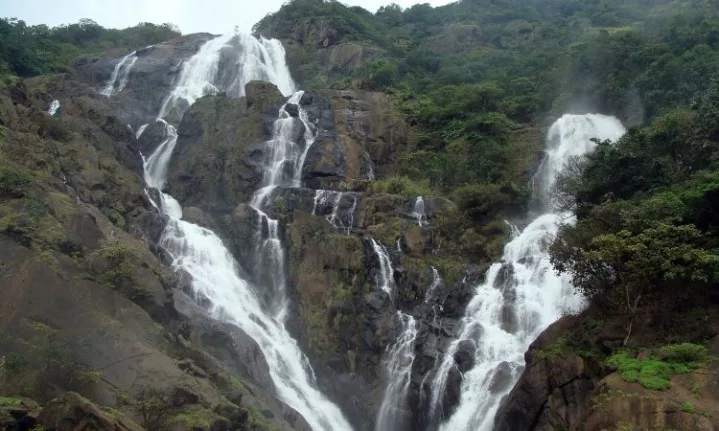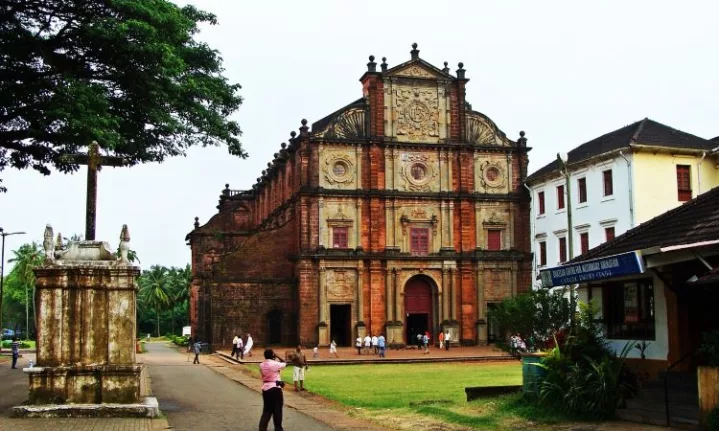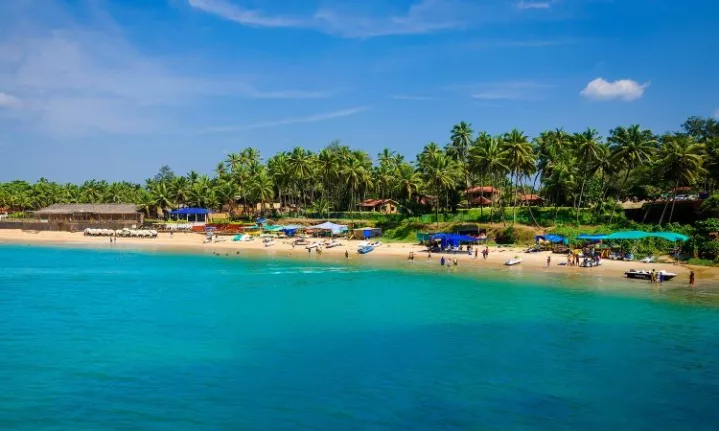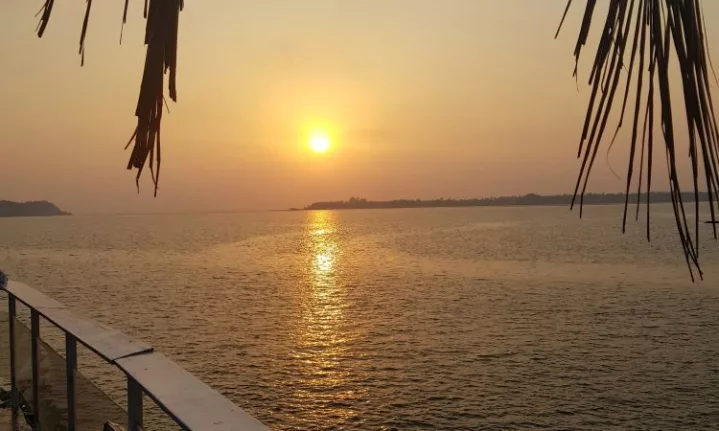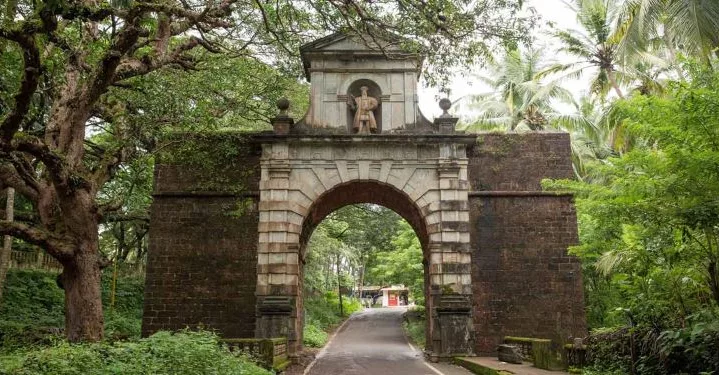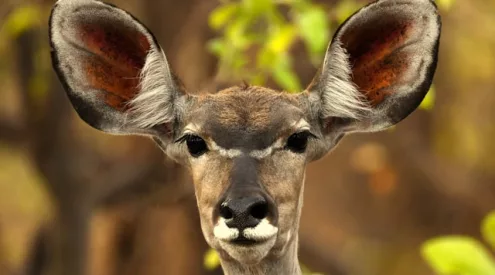Goa, a vibrant jewel in Western India, captivates with its picturesque coastlines along the Arabian Sea and a rich tapestry of history and culture. This former Portuguese colony merged with India in 1961, presenting a fascinating blend of historical and contemporary attractions. Its legacy shines through in the well-preserved 17th-century churches and the lush tropical spice plantations. Beyond its historical treasures, Goa’s charm also radiates from its stunning beaches, ranging from the bustling stretches of Baga and Palolem to the tranquil fishing villages like Agonda. It offers a perfect fusion of old-world charm and modern-day vibrancy, asserting itself as the eccentric party capital of India. Explore some places to visit in Goa.
This state offers a kaleidoscope of experiences, with an array of attractions that cater to every taste. Visitors can explore iconic beaches, undoubtedly the crown jewels of Goa’s tourist spots.
Also read: Work, beach, rave: India’s Goa state looks to attract digital nomads
These beaches delight the senses, offering relaxation and recreation in equal measure. Beyond the sun and sand, Goa beckons explorers to its rich heritage, showcased in majestic forts like Fort Aguada and Chapora, and revered churches like the Basilica of Bom Jesus and The Church of Our Lady of Immaculate Conception. Goa weaves its tourism tapestry with varied threads – from royal casinos to natural wonders like waterfalls and caves, and from quaint villages to bustling flea markets.
Places To Visit In Goa
1. Baga Beach
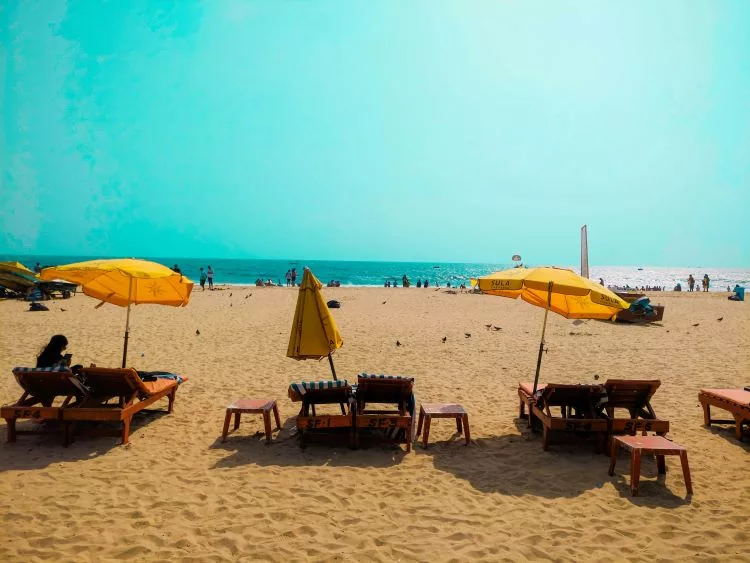
Photo by Sarang Pande on Unsplash
Baga Beach, a jewel in Goa’s crown, shines as one of the most dynamic and sought-after coastal destinations. This bustling haven pulsates with life, standing as a testament to Goa’s vibrant beach culture. Here, visitors are greeted with a myriad of activities that range from the thrill of water sports to the pleasure of culinary delights and the allure of exclusive shopping. Baga Beach isn’t just a stretch of sand; it’s a lively world unto itself, embodying the spirited essence of Goa in every aspect.
Perfectly positioned near Calangute Beach and a short drive from Panjim, Baga Beach is the epicentre of North Goa’s electric nightlife. Renowned establishments like Britto’s, Tito’s, and Mambos offer a taste of the legendary Goan party scene, all within easy reach. The beach, named after the scenic Baga Creek that merges with the Arabian Sea, is also a shopper’s paradise, boasting a blend of high-end designer outlets and quaint local markets. Whether it’s enjoying a gourmet breakfast at the famous Infantaria, basking in the sun, or immersing oneself in the pulsating evening festivities, Baga Beach provides an experience that fluidly transitions from peaceful relaxation to high-energy entertainment.
Location: North Goa, India
Google Rating: 4.5
2. Palolem Beach
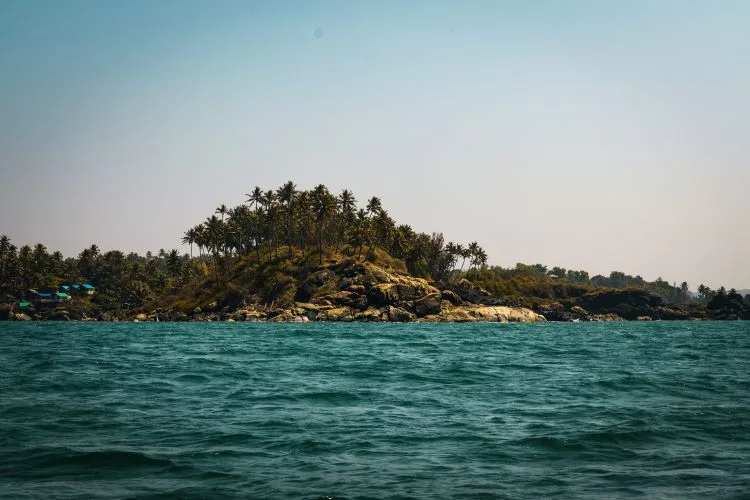
Photo by Shravan Yelburgi on Unsplash
Palolem Beach in South Goa, approximately 38 km from Madgaon in Canacona, epitomizes the serene beauty of Goa’s coastline. Unlike the bustling beaches in the north, Palolem offers a peaceful and soothing atmosphere, making it a favourite among travellers seeking tranquillity. Known for its pristine white sands stretching nearly 2 km, this beach is a scenic cove characterized by its rocky formations and calm waters.
Palolem Beach, popularly known for its Dolphin spotting cruises, is not just about the serene vistas but also about the vibrant life it encapsulates. From clean shorelines to cozy beach shacks and quaint souvenir shops, the beach, embraced by lofty hills on either side, can be explored on foot within 15-20 minutes. The unique ‘silent noise parties’ of Palolem Beach, where revellers dance to music on headphones, add to its distinctive charm.
The nightlife at Palolem Beach is an experience in itself, offering an unforgettable blend of relaxing vibes and mesmerizing beach views. Neptune Point at Palolem Beach hosts famous silent parties every Saturday night, creating an enchanting atmosphere for party-goers.
Location: Canacona, Goa
Google Rating: 4.6
Also read: Rare black leopard spotted in Goa Sanctuary
3. Fort Aguada
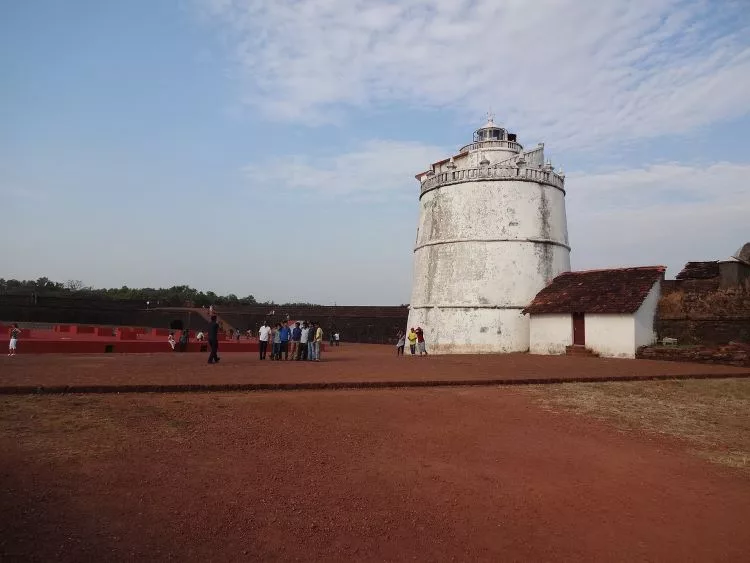
Image by Mittal Patel from Pixabay
Fort Aguada, a splendid relic of the 17th century nestled on the shores of Sinquerim Beach in Goa, stands as a testament to the melding of European architectural prowess and India’s rich history.
The fort, whose name ‘Aguada’ is derived from the Portuguese word for water, sits majestically at the confluence of the Mandovi River and the Arabian Sea. Constructed in 1612 as a defence against the Dutch and Marathas, it not only served as a crucial military stronghold for the Portuguese but also as one of Asia’s largest freshwater reservoirs, capable of holding a staggering 2,376,000 gallons.
Today, it enjoys the status of an ASI-protected Monument of National Importance, captivating visitors with its well-maintained ramparts and the distinctive four-story lighthouse, a rare find in Asia. The fort’s elevated position offers breathtaking sunset views, making it a prime spot for those delving into Goa’s storied past.
Location: Candolim, Goa
Google Rating: 4.2
4. Dudhsagar Falls
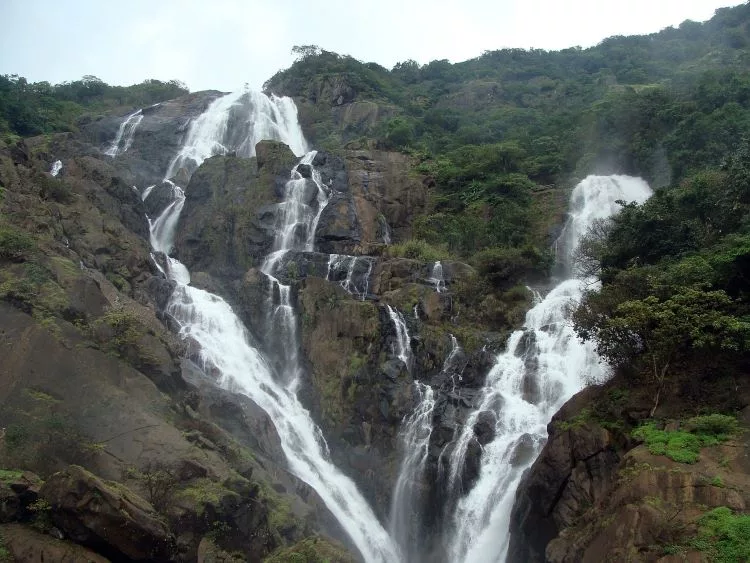
Image by Bishnu Sarangi from Pixabay
Dudhsagar Falls, a breathtaking cascade in the heart of Mollem National Park, is one of India’s tallest waterfalls and a jewel in Goa’s natural crown. Located about 60 km from Panaji on the Goa-Karnataka border, this 310 m high waterfall, known as the ‘Sea of Milk’, is a marvel where the Mandovi River splits into four tiers, cascading down the hill in a majestic flow. This stunning natural wonder, a little farther inland from the bustling coastal areas, offers a serene retreat for nature lovers and adventure seekers alike.
Visitors to Dudhsagar Falls can choose various ways to experience its grandeur, from a jeep ride or private transport from Panaji to more adventurous options like a train journey or trekking.
Although the famous Dudhsagar Railway trek is closed, the trek to the lower falls remains open, inviting trekkers to explore the lush surroundings. The best time to visit these falls is during the monsoon when they are at their most magnificent, surrounded by the verdant beauty of the deciduous forests. However, caution is advised during this season due to slippery paths and the risk of the river swelling.
For those planning a visit, carrying mosquito repellants for overnight stays and refraining from diving into the Devil’s Canyon are recommended for a safe and enjoyable experience. Visitors are also reminded to respect the area’s status as a protected forest and keep it clean.
Location: Sonaulim, Goa
Google Rating: 4.6
5. Basilica of Bom Jesus
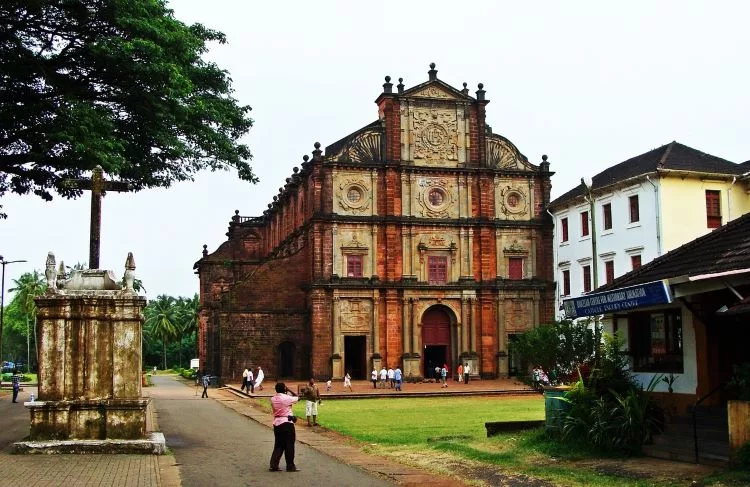
Image by Bishnu Sarangi from Pixabay
The Basilica of Bom Jesus in Goa, an architectural and spiritual marvel, is a testament to the rich cultural tapestry of the region. As a UNESCO World Heritage Site, this church captivates visitors with its stunning baroque architecture.
Constructed in 1594 and consecrated in 1605, this basilica stands as a symbol of the dawn of Christianity in India. Located in Old Goa, about 10 km from Panjim, the Basilica of Bom Jesus is not only the oldest church in Goa but also a sacred repository of the mortal remains of St. Francis Xavier, a co-founder of the Society of Jesus (Jesuits). The well-preserved body, displayed every decade, adds to the church’s mystical allure, drawing both the faithful and the curious.
The Basilica, a cultural and religious icon, is remarkable for being the only church in Old Goa left unplastered externally, showcasing its distinctive facade adorned with the Jesuit emblem ‘IHS,’ signifying ‘Jesus, Saviour of Men’.
The interior of the church is equally mesmerizing, with its marble mosaic flooring and precious stones, and a grand screen that depicts St. Ignatius Loyola with the infant Jesus, crowned by the Holy Trinity. The Basilica, standing for over 408 years, is an open book of history, welcoming visitors daily to explore its sacred halls. Architecturally, the Basilica blends simplicity with grandeur, a hallmark of the Baroque style.
Location: Velha Goa, Goa
Google Rating: 4.5
6. Calangute Beach
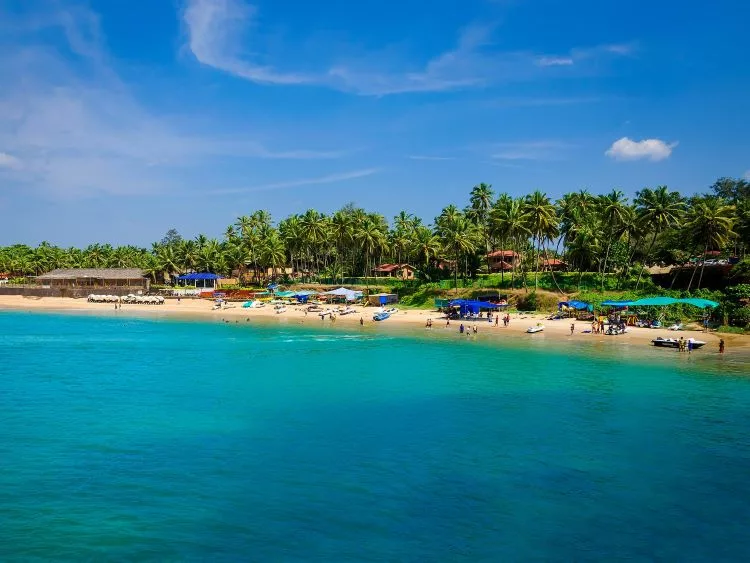
Photo by alexey turenkov on Unsplash
Calangute Beach, often referred to as the “Queen of Beaches,” stands as a majestic stretch of sand in North Goa. Located just 15 km from Panjim, it is renowned for being the longest beach in the region, extending from Candolim to Baga. This beach is not just a geographical wonder but also a cultural hotspot, attracting tourists and backpackers from across the globe with its vast expanse and vibrant atmosphere. Recognized among the top ten bathing beaches worldwide, Calangute Beach pulses with life, offering an abundance of dining options, lively shacks, and clubs. The beach is also a hub for thrilling water sports activities, including parasailing, water surfing, banana rides, and jet-skiing, making it a paradise for adventure enthusiasts.
As the sun sets, Calangute Beach transforms into a nightlife haven, with its array of parties featuring psychedelic music, delicious food, and an assortment of drinks. It’s a place where nights are as lively as the days, filled with the spirit of celebration and joy.
Key spots for an unforgettable night out include Tio Tilly’s Bar and Kitchen, known for its exquisite interiors and vibrant ambience, Carvalho’s, offering a taste of diverse cuisines, and Spice It, a perfect spot for casual dining and drinks. Additionally, Calangute’s proximity to other North Goa beaches like Baga, Anjuna, and Candolim makes it an ideal base for exploring the region.
Location: North Goa, Goa
Google Rating: 4.4
7. Anjuna Beach
Anjuna Beach, a vibrant stretch along North Goa’s coastline, is situated just 21 km from Panjim. Known for its sprawling 2km golden sands and unique rocky outcrops, Anjuna Beach has evolved into a quintessential Goan experience. This beach is a melting pot of activities, appealing to a wide spectrum of visitors, from families enjoying the sun to thrill-seekers indulging in water sports.
It has become synonymous with Goa’s electrifying nightlife, beach shacks, water sports, full-moon parties, and iconic flea markets. The beach, popularly known as the ‘jewel of Ozran,’ continues to retain its hippie charm, a legacy dating back to the 60s. It’s a place where you can mingle with an eclectic mix of global travellers, all drawn to Anjuna’s enchanting vibe. From partying at Curlies or enjoying techno beats at Cafe Lilliput to savouring culinary delights at local eateries, Anjuna offers an unforgettable beach experience.
Anjuna Beach’s allure extends to a wide array of water sports, including jet-skiing, parasailing, and banana boat rides. Scuba diving and snorkelling enthusiasts also flock here for vibrant underwater experiences.
The Anjuna Flea Market, a bustling hub open every Wednesday and Saturday, is a treasure trove of local arts, boho jewellery, and colourful textiles, best explored in the cooler morning or evening hours.
Location: North Goa, Goa
Google Rating: 4.4
8. Thalassa
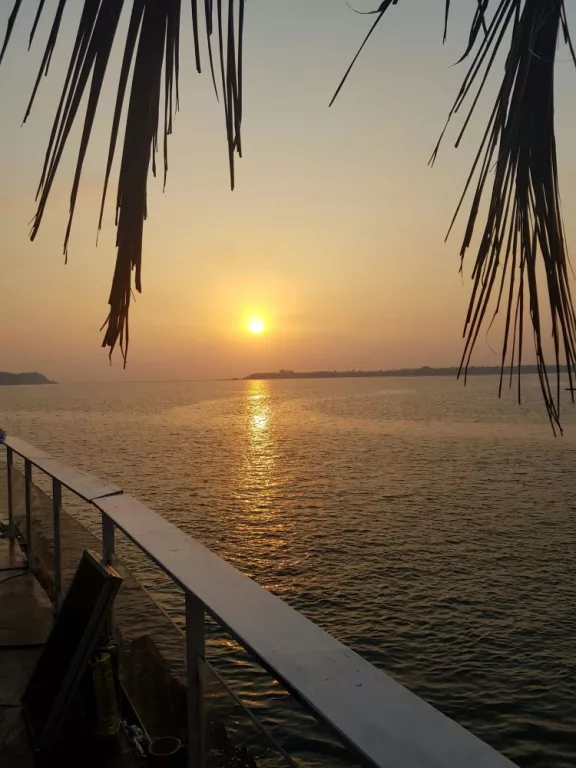
Photo by Tarak Patel on Unsplash
Thalassa- The Greek Taverna, elegantly situated atop the rocky cliffs of Goa, has etched its name as one of the most distinguished restaurants in the region. Recently relocated to the serene backwaters of Siolim, departing from its previous perch on Vagator hilltop, Thalassa is celebrated for its tantalizing signature cocktails and mesmerizing sunsets. This restaurant is not just about dining; it’s an immersion into the cultural essence of Greece, offering patrons an authentic taste of Greek Mediterranean cuisine.
Mariketty Grana, renowned for her exceptional hospitality, is the visionary behind Thalassa. The open-air establishment exudes a welcoming charm with its comfortable cushioned chairs, rustic wooden decor, and vibrant music, all complementing the stunning ambience. Thalassa is famous for its dynamic live-fire shows and traditional Greek dance performances like Sirtaki and Zorba, adding to the lively atmosphere. This place is a culinary haven, frequented by celebrities like Robert De Niro and various Bollywood stars, attesting to its allure and popularity.
Thalassa stands out in Goa not only for its delectable Greek and Mediterranean offerings but also for its breathtaking seaside and sunset vistas. Located at the northernmost tip of Vagator, along the seaside road from Siolim, it is affectionately dubbed ‘Little Greece’. Mariketty Grana, along with her son Spiro, have successfully recreated a slice of Grecian magic in Goa.
Location: Siolim, Goa
Google Rating: 4.3
9. Shree Mangesh temple
The Shri Manguesh Temple, nestled in Mangeshi’s quaint village in Priol, Ponda taluk, Goa, shines as a beacon of spiritual significance and architectural beauty. Located just 1 km from Mardol, near Nagueshi, and 21 km from Panaji, Goa’s capital, this temple draws reverence, especially from Saraswat Brahmins and other communities. It dedicates itself to Bhagavan Mangesh, an incarnation of Lord Shiva, embodying cultural heritage and spiritual devotion. Devotees worship the deity as a Shiva linga, and the temple’s legend intertwines with a story of Lord Shiva appearing as a tiger to startle his wife, Parvati.
More than just a place of worship, the temple has become a popular tourist destination, renowned for its striking architecture that captivates devotees and visitors alike. Its exterior and interior boast intricate designs and a serene ambiance, attracting a multitude of people every day. The Shri Manguesh Temple’s welcoming nature, marked by its no-demand for donations, often leaves visitors impressed and contributes to the temple’s tranquil and spiritual atmosphere.
The temple enforces a strict dress code, mirroring its sanctity and traditional values. Men must wear shirts with trousers, dhotis, or pyjamas with an upper cloth, while women should dress in sarees, half-sarees with blouses, or churidars with pyjamas and an upper cloth. The temple’s decorum prohibits attire like shorts, mini-skirts, middies, sleeveless tops, low-waist jeans, and short-length T-shirts.
Location: Mardol, Goa
Google Rating: 4.6
10. Arch of the Viceroys
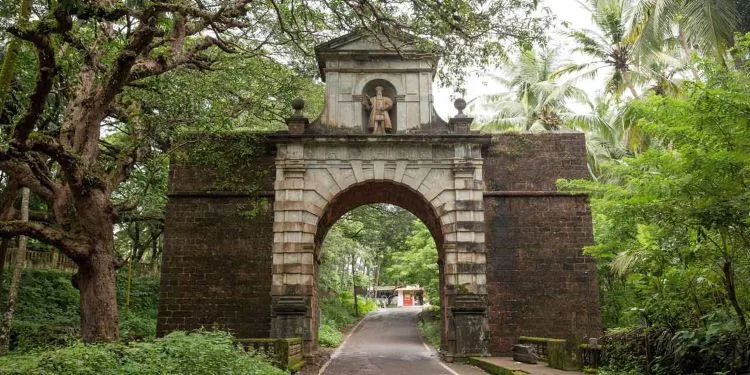
Picture: Facebook / @Revisitar Goa
Last on our list of places to visit in Goa stands the Arch of the Viceroys, also known as Viceroy’s Arch. Viceroy Francisco da Gama, the grandson of the legendary explorer Vasco da Gama, erected it in 1599, making the arch not just a monumental piece of architecture but also a symbol of Goa’s rich past. Following a collapse, restorers returned it to its former glory in 1954, and it now boasts the status of an ASI-protected Monument of National Importance, testifying to its historical and cultural value.
Nestled among Old Goa’s myriad religious edifices, close to the Mandovi River and the ferry terminal, the Viceroy’s Arch claims a special place in the annals of history. Francisco Da Gama built it as a tribute to his great-grandfather Vasco Da Gama during his governorship from 1597 to 1600.
In the era when Old Goa was the epicenter of Portuguese influence in the region, the arch stood as the city’s principal gateway. Beyond its architectural splendor, the Viceroy’s Arch held significant ceremonial importance. Here, the outgoing viceroy would hand over the symbolic keys of Old Goa to his successor, marking the continuity of leadership and tradition.
Location: Old Goa, Goa
Google Rating: 4.4
Follow us on social media for more travel news, inspiration, and guides. You can also tag us to be featured.
TikTok | Instagram | Facebook | Twitter
Also Read: 10 underrated small towns and villages in South Africa

